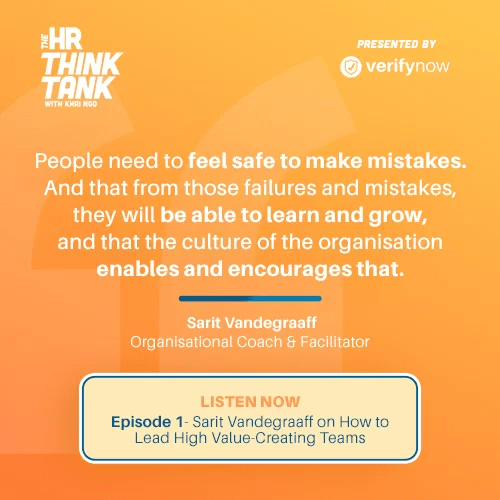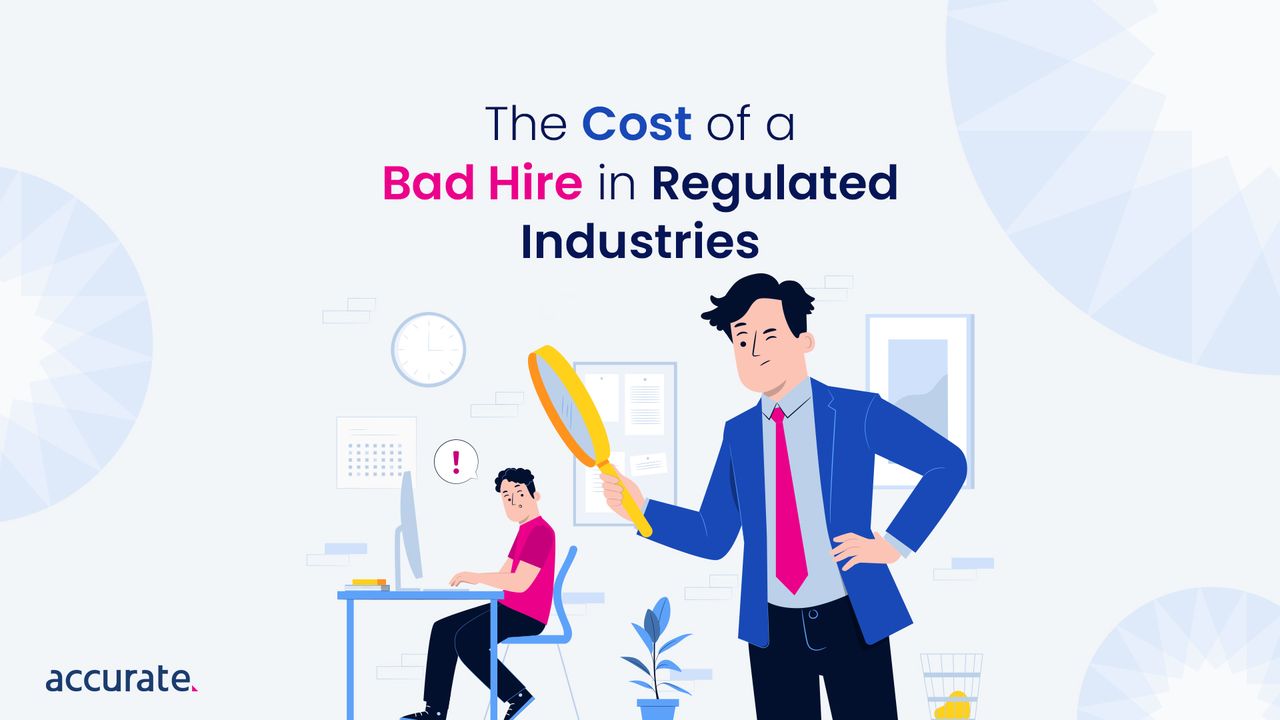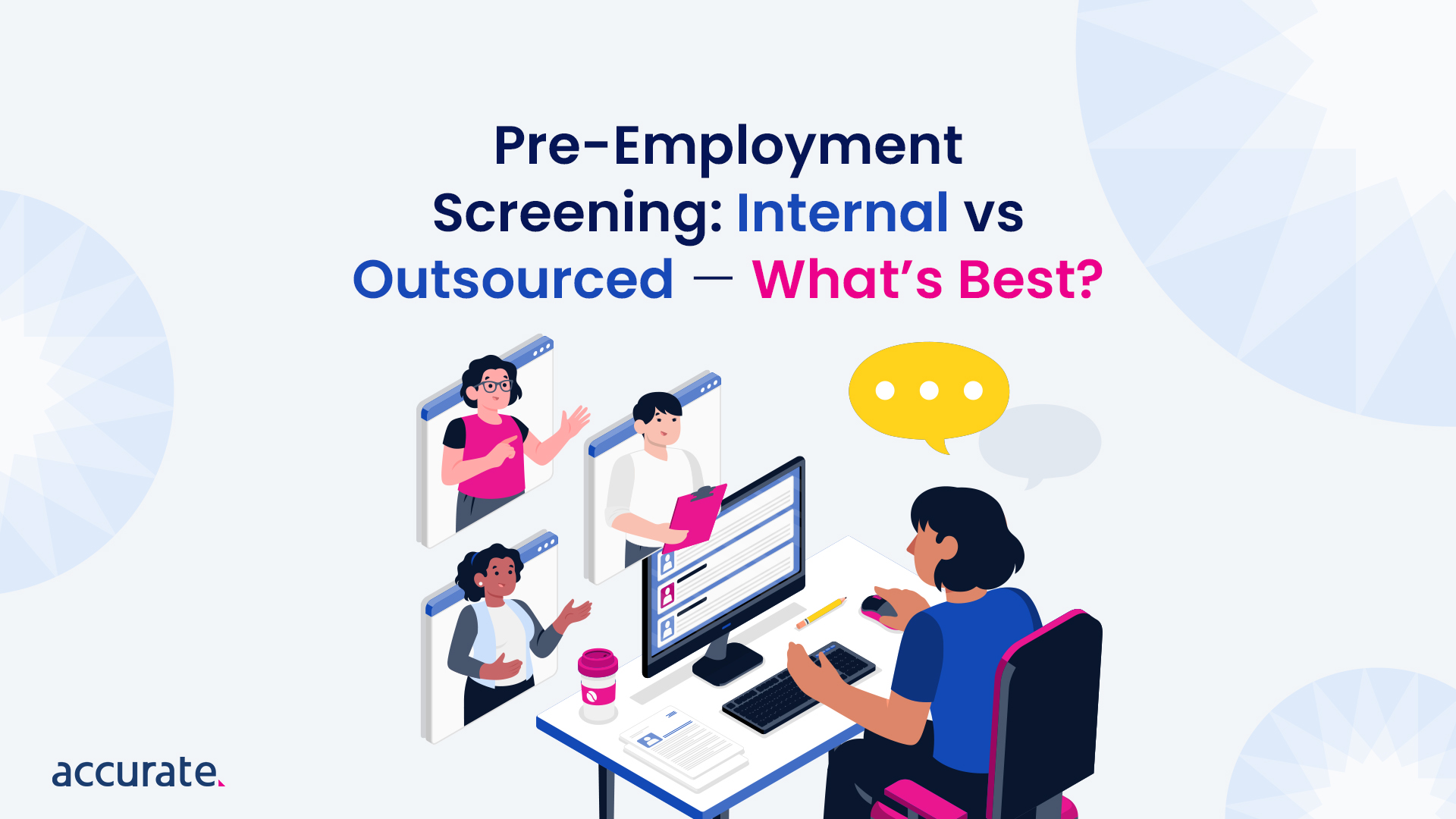Any team in an organisation should be defined by their purpose, not their members. If your teams can identify their purpose and create value, they can pass that on to their customers and clients.
In our first episode of the HR Think Tank podcast, we spoke to Sarit Vandegraaff, a highly experienced organisational coach and facilitator who has worked with leaders from a cross-section of industries here in Australia and abroad.
We explored what it means to have a high value-creating team and how the neuroscience of conversation plays a role in establishing those teams.
Sarit is certified in Conversational Intelligence and is a certified professional coach with the International Coaching Federation.
Here’s what she had to say.
What is a High Value-Creating Team and Why Should You Have One?
The notion behind a high value-creating team was first established by Professor Peter Hawkins, a leadership professor at Henley Business School in the UK.
The idea was that if organisations were to create teams that were more connected, future-focussed and were rewarded personally and professionally, they would be far more successful and better at retaining their employees in the long term.
Beyond that, a high value-creating team works with, and for, their stakeholders. According to Sarit, these teams work within an ecosystem that includes stakeholders, organisations, and individuals.
If a team can identify what purpose they serve as part of the organisation as a whole, that purpose can guide direction and collaboration.
So, essentially, a high value-creating team looks at:
- What are we actually here to do as a team?
- What is our purpose?
- And what is our commission as a team to create?
How a High Value-Creating Team Compares To an Average Team
According to Professor Peter Hawkins, “A team is value-creating when it continually co-creates greater beneficial value with, and for all, their stakeholders, current and future.”
A high value-creating team is focused on the bigger picture and is much more client-focused. Where an average team might still focus on trust, results and clear goals, it’s always short-term, and oftentimes their purpose is their own success.
Sarit uses a team meeting as an example.
After a great team meeting where everyone leaves feeling motivated and excited, “an average team would then walk away from that team meeting and become the head of whatever department. From there, they’ll then develop their own communication style and represent themselves.”
On the other hand, a high value-creating team will leave those meetings with the full intention to represent their team’s brand in everything they do – it’s about creating success collectively for all the stakeholders.
The difference is that a high value-creating team knows how the team will drive the purpose forward and make things work together instead of individually.
The Difference Between Being a Manager and a Leader
Some leaders show up more as managers. And while Sarit notes that that is not necessarily a bad thing, management is more focused on the administrative part of leadership.
On the other hand, leadership is more about the people – “how am I inspiring my people and motivating and engaging them to do the work?”
So, essentially, leaders have to be more self-aware because they need to understand how they are showing up and their impact on their people.
Sarit also emphasises the importance of striking a balance between being a good manager and a good leader because management is an essential function in leadership. If we only had leadership without management, teams wouldn’t understand what is expected of them and what their roles are.
“If the leader knows what the expectations are, what the organisation is trying to achieve, and what the stakeholders are looking for, it’ll be clear where they fit in and how they can be creative and experiment with their team.”
Creating Psychological Safety Within Your Organisation
Creating psychological safety within your organisation fosters a shared belief that team members feel safe to take risks because they know that they won’t be punished or embarrassed for owning their mistakes, sharing ideas and asking questions.
If there is a psychologically safe environment, high value-creating teams can productively challenge one another and hold each other accountable without it being threatening.
Sarit believes that many organisations mistakenly believe that psychological safety is just about the culture in terms of having good relationships. A lot of organisations have great cultures on the surface. But psychological safety is much deeper than that.
“If your team feels safe and the organisation’s culture encourages that, they have an environment in which they can learn and grow.”
And psychological safety is all about trust, “if trust exists and if there’s a culture of trust within the organisation, then I know that I’m safe to make those mistakes and speak up without fear.”
If your team can make mistakes and be candid, then Sarit believes that’s a really good measure that psychological safety is alive and well in the organisation.

Key Takeaways
Sarit Vandegraaff is passionate about nurturing the idea of high value-creating teams in organisations.
If you want your team to be productive, innovative, engaged and creative, you’ll need to trust them to take some risks, experiment and make decisions. But the team can only do that if they feel that there’s psychological safety and trust.
And so, as a leader, you need to ensure that you build trust with your team so that they can perform to the best of their abilities and as the best version of themselves.
Leadership Space is on a mission to strengthen the thriving social purpose economy, and they do this by helping social purpose leaders to transform their organisation’s effectiveness.
Make sure to tune into HR Think Tank Episode 1 with Sarit, where she shares tips on how to recruit high-value talent, how to set them up for success, and fostering trust within your team.



